Tension-type headaches: a common struggle for gamers
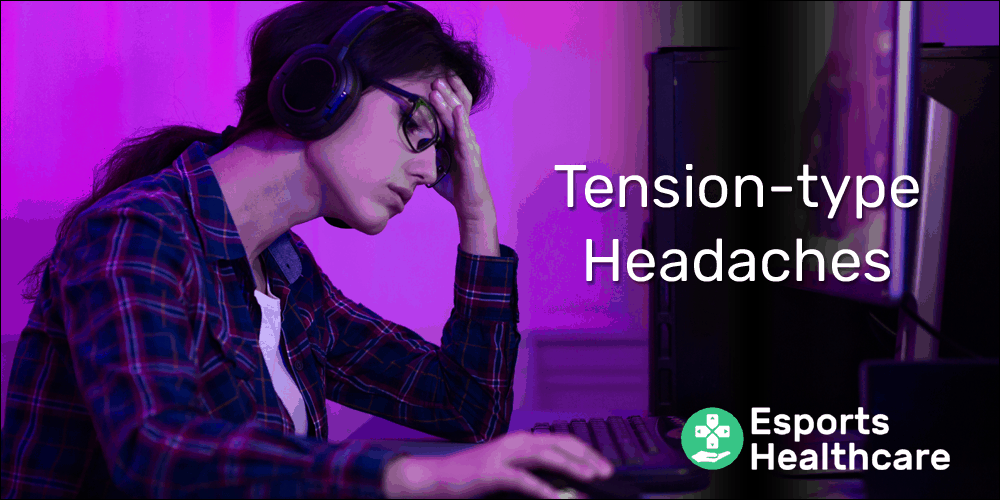
Key points
Disclaimer
This information is for educational purposes only and is not intended to replace the advice of your doctor. Esports Healthcare disclaims any liability for the decisions you make based on this information.
The information contained on this website does not establish, nor does it imply, doctor-patient relationship. Esports Healthcare does not offer this information for diagnostic purposes. A diagnosis must not be assumed based on the information provided.
What are tension-type headaches?
Tension-type headaches are considered secondary headaches. In other words, they are not truly pain in the head (e.g., the brain, its protective sheaths, or the skull). Instead, muscles of the upper back, neck, head, and face refer pain to different regions of the head.
Commonly, tension develops in the muscles of the upper back and neck when posture is poor. For gamers, this usually occurs when the head is leaning towards the monitor and the shoulders are rounded forward—a condition known as upper crossed syndrome.
Pertinent anatomy
It’s important to understand the anatomy of the shoulders, head, and neck to better understand tension-type headaches.
Muscles that refer pain to the head
The most common muscles that refer pain to the head are as follows:
Occipitofrontalis – a muscle with two parts; one muscle belly is at the base of the skull (in the back) and the other is on the forehead. This muscle will raise your eyebrows and has the ability to move the scalp.
Temporalis – this muscle is located above and in front of your ears on the “temples” of your skull. These muscles are primarily responsible for closing your jaw (biting down).
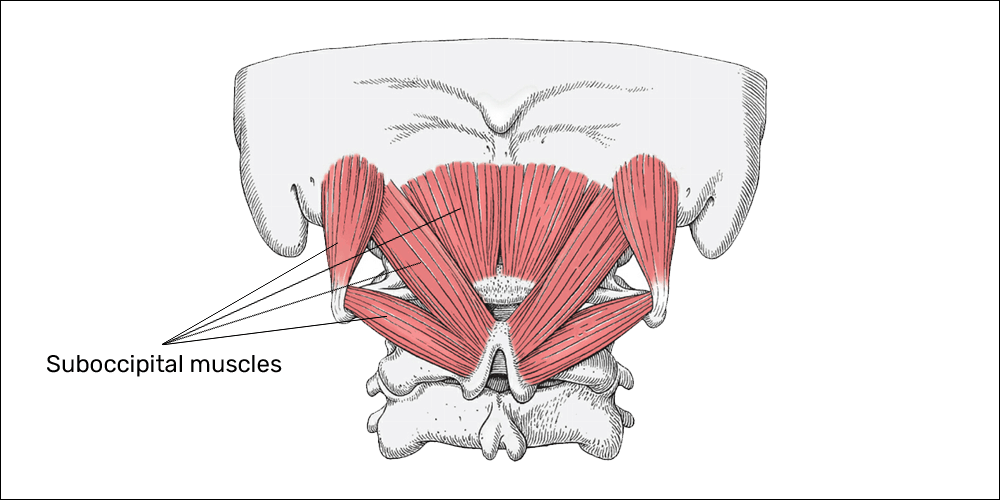
Suboccipital muscles – there are four muscles collectively called the suboccipital muscles. These muscles are located at the base of your head and attach between the skull, the first vertebra (C1 or atlas), and the second vertebra (C2 or axis). They assist with extension and rotation of your head.
Upper trapezius [see image below] – these are the “shrug muscles” at the top of your shoulders. They also extend, rotate, and laterally bend the neck and head.
Sternocleidomastoid (SCM) [see image below] – these muscles are located on each side of the neck. They can be traced from behind the ear to the breast bone and form the “V” shape along the front of the neck. The SCM muscles are responsible for rotation and flexion of the neck.
Nerves involved in tension-type headaches
Greater occipital nerve – these nerves supply the back and top of the head. The suboccipital muscles lie on top of these nerves and, when compressed, may cause a headache in the back and top of the head.
Lesser occipital nerve – these nerves supply the lower and outer portions of the back of the skull. The suboccipital muscles also lie on top of these nerves and, when compressed, may cause a headache in the back of the head.
Pathophysiology
The cause of pain in tension-type headaches is muscle tension (hypertonicity) and trigger points. Myofascial pain (myo- meaning muscle) tends to be dull, achy, and poorly localized.
Clinical understanding of tension-type headaches, paired with current treatment approaches (to be discussed below) suggest increased resting muscle tone (hypertonic or “tight” muscles) to be the most probable cause.
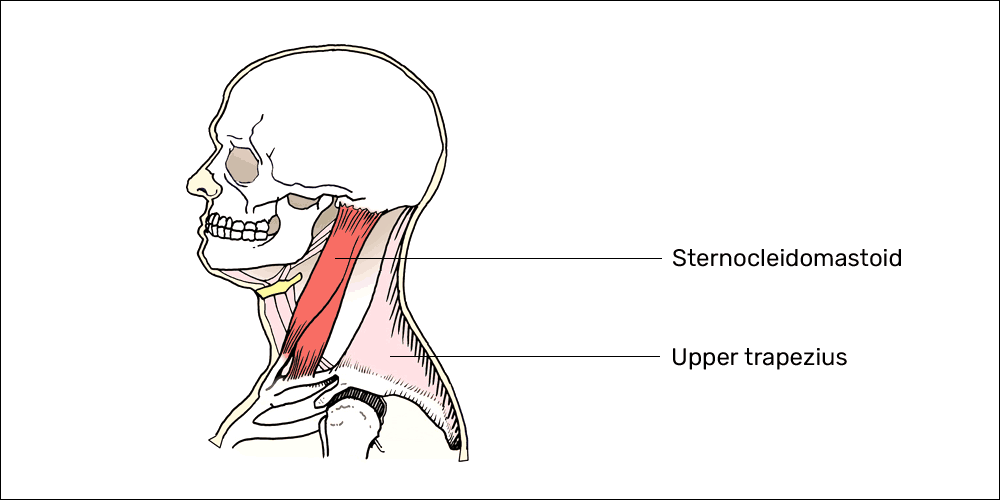
Muscle hypertonicity and trigger points
Muscle tone is in reference to the muscle’s contraction at rest. Normal resting tone means the muscle is not contracting. A muscle at rest will feel loose and softer to the touch.
Increased resting tone (or hypertonicity) means the muscle is engaged in contraction, regardless of conscious control. A hypertonic muscle will feel “tight” and firmer to the touch.
A spasm, on the other hand, is a full, unconscious muscle contraction. This is different and far more intense than hypertonicity and will likely cause moderate-to-severe pain.
Trigger points are the term used for “knots” in the muscle. The name “trigger point” was given because, when stimulated (e.g., pressure, stretching, or contraction), it gives rise to (or triggers) pain elsewhere in the body—known as referred pain.
Signs and symptoms
Some of the signs and symptoms have been stated above, but will be stated again in the following sections because it is important to be able to differentiate a tension-type headache from a migraine headache.
| Symptoms | Tension-type headache | Migraine |
| Dull, aching head pain | Yes | No |
| Tightness sensation | Yes | No |
| Tenderness of scalp | Yes | Possible |
| Tenderness in muscles of head and neck | Yes | Possible |
| Visual disturbances | No | Possible |
| Light and sound increase pain | Uncommon | Yes |
| Pain usually on one side of head | No | Common |
| Pain wraps around head/forehead | Yes | No |
| Nausea and Vomiting | Uncommon | Common |
| Relief with NSAIDs | No | No |
| Relief with heat therapy | Yes | No |
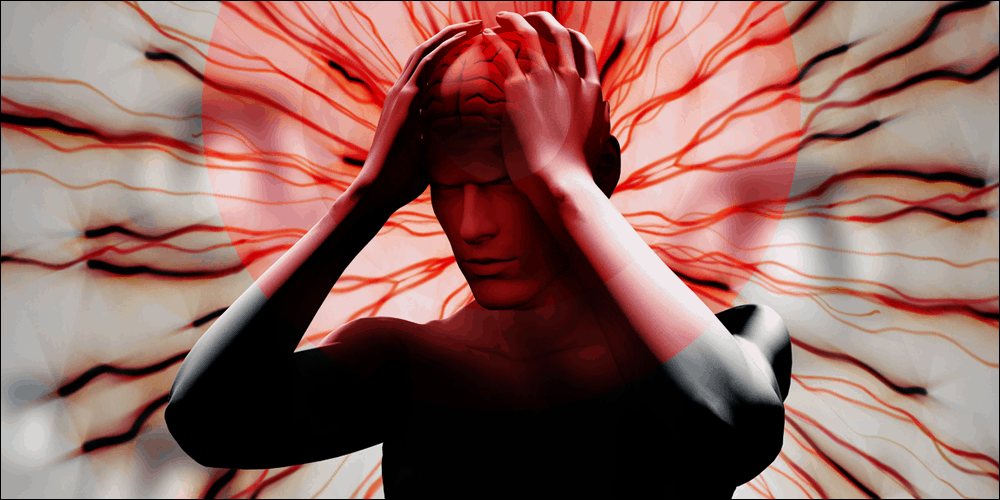
Tension-type headaches may feel more intense with movement of the head and neck due to stretching and contracting of the muscles and their trigger points.
Common mechanism(s) of injury
Previously, we discussed muscular involvement in tension-type headaches including hypertonicity and trigger points. But, what exactly does that mean?
When under stress, strain, improper or over use our muscles can develop knots or trigger points. These trigger points have the potential to refer pain. So, what does that mean?
This means that when stimulated—stretched or contracted—the pain will be felt in another area of your body. The most well-known example is the upper trapezius muscle.
Trigger points in the upper trapezius muscle will refer pain to the head; specifically, a dull, diffuse aching pain will be felt up the side of the neck and around the ear.
Postural and positional imbalance
A common cause of hypertonicity and trigger points is poor posture. Anterior head carriage and forward rounded shoulders—signs of upper crossed syndrome—will put muscles in a shortened position leading to increased tension.
Another exceptionally common mechanism of imbalance is your sleeping position. Your sleeping position can cause abnormal stress on the muscles and structures in your neck; for example, sleeping on your stomach will likely force you to turn your neck to one side or the other.
Holding this position for extended periods of time (e.g., one hour would be considered an extended period of time) may lead to hypertonicity and trigger points.
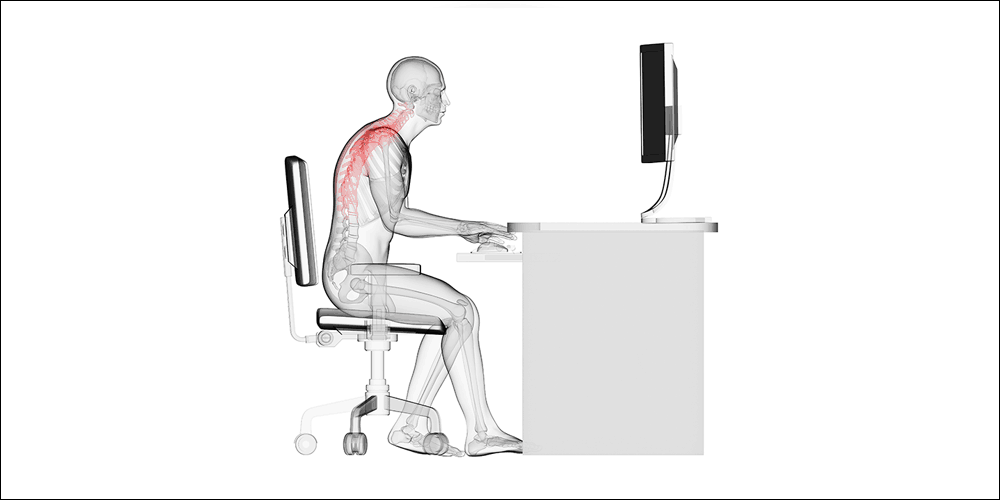
Hydration and mineral imbalance
Another common cause of hypertonicity and trigger points is hydration status and mineral (electrolyte) balance. The electrolyte minerals are sodium, potassium, calcium, and magnesium.
For most of us, lack of sodium is not an issue. Many diets, particularly the typical American diet, are high in sodium. For the other minerals—namely potassium, calcium, and magnesium—it is important to maintain sufficient levels.
Potassium – important in maintaining the electrical activity of nerve cells. Nerve cells are noticeably affected when potassium levels fall, often leading to muscle spasm.
Calcium – important for the transmission of nerve impulses to the muscle fibers; calcium also facilitates the interaction between actin and myosin (microscopic muscle fibers that create movement in muscles) during contractions.
Magnesium – acts as a muscle relaxant; it competes with calcium for protein receptors to help calm and relax muscles.
Lastly, and perhaps most importantly, there is water. The majority of our body is comprised of water, yet many people don’t drink enough. Water is necessary for normal body function, regardless of the tissue. For muscles, water helps maintain resting tone.
A simple way to understand hydrated versus dehydrated muscle is looking at a sponge. When a sponge is dry, it is not pliable; rather, it is rigid and feels firm to the touch. Once the sponge is hydrated, it is easily manipulated and soft to the touch.
If you don’t consume enough water each day, your muscles will certainly be affected.

Prevention and treatment
One of the main causes of tension-type headaches is stress. Generally, those afflicted with headaches are experiencing stress in their daily lives. While it is easy to say “relax” or “chill out,” it’s not that simple. Below are a few ways to help manage stress as well as to address other issues that contribute to tension-type headaches.
Meditation – guided meditation can be helpful for stress reduction, clarity and body awareness. Meditation guides can be found on phone apps, YouTube videos, or books about meditation.
Yoga asanas – while it is often believed that yoga is mainly stretching, it is more aligned with teaching body awareness, muscle activation, alignment, mental clarity and balance.
Chiropractic care – chiropractic interventions aren’t just “cracking” joints; although adjustments can be incredibly beneficial to relieve tension-type headaches.
Manual therapy and massage – muscular release and relaxation will help to reduce the tension in muscles, which can decrease pain associated with tension-type headaches.
Physical therapy – aims to utilize muscular release, primarily through manual therapy, stretching, and exercises to help reduce unnecessary and unwanted strain on the muscles involved.
Exercise – specifically, movements designed to improve posture, muscular balance, an efficient functional movement
